
Photos: Roger Gascoigne
Twenty years ago today, Tomas Enge scored a crushing victory at the Hungaroring to top the International F3000 points table for the first time. But a chain of events then occurred that marked a note in racing history
There was plenty of celebrations at Arden following Enge’s fourth win of the season, but unbeknown to him a random drug test he had undergone during the weekend would show traces of a “banned substance”, cannabis. He had been tested before in multiple occasions, always clean, but this time it was different. The fallout would ultimately change his season and his career fundamentally.
As the teams assembled for the championship decider at Monza on the second weekend of September, news broke of Enge’s positive drug test, prompting a level of media interest unprecedented in the category.
“Monza was crazy,” he tells Formula Scout over a coffee 20 years on.
“Of course, it was difficult because the media were pushing, and not only the media but the whole paddock – other teams, other drivers and so on. So, you feel the pressure from people, from all angles.”
For his fourth full season in F3000 in 2002, the then 25-year-old Czech had moved to Arden International, the team owned and run by Christian Horner, now, of course, Red Bull Racing’s team principal.
Displaying the same fierce protection of his driver that we have become accustomed to in Formula 1, Horner was, says Enge, “impeccable in his behaviour,” that weekend.
“He said: ‘Fine, we will stand by you, and we want to do the most for you so we can win the championship here at Monza. So, I will face the media and we just want you to concentrate on the race.’”
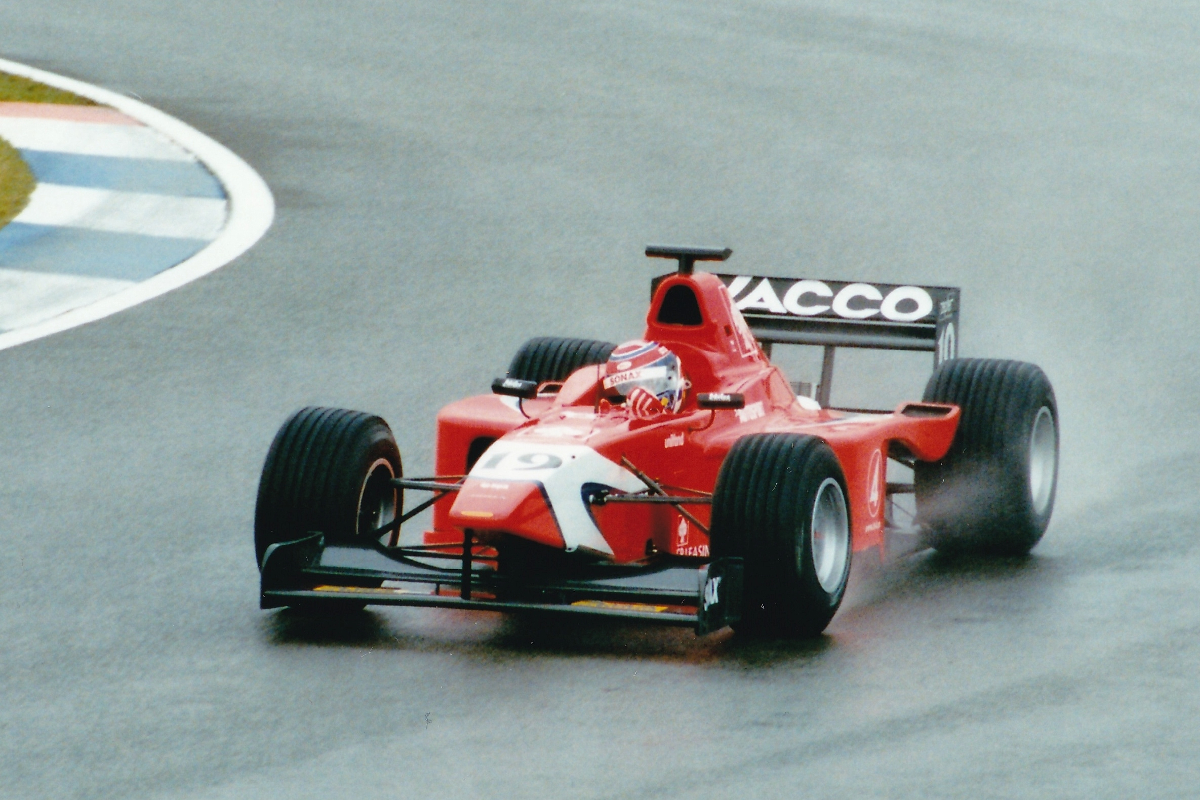 “But I think we managed the pressure – Bjorn [Wirdheim, Enge’s team-mate] won. All the pressure was on me personally, but we had a super car, so he managed to take maximum advantage because he was not under any pressure, and he just drove away from everybody and won the race.”
“But I think we managed the pressure – Bjorn [Wirdheim, Enge’s team-mate] won. All the pressure was on me personally, but we had a super car, so he managed to take maximum advantage because he was not under any pressure, and he just drove away from everybody and won the race.”
Enge himself, suffering from a nasty cold on top of everything else going on around him, appeared oblivious to the media frenzy. Third on the grid at Monza, he dropped to fifth at the start but after a late safety car restart picked his way through to second, enough to clinch the title. For now.
When a second sample also proved positive however, he was summoned to a World Motor Sport Council meeting in October for his case to be heard and to learn his sentence. Drug abuse, particularly for a recreational substance, was almost unknown in motorsport. Would the WMSC be lenient? Would it suspend Enge from racing but leave past results unaffected?
To this day, Enge continues to maintain his innocence of having knowingly taken cannabis. “We don’t know what happened,” he says. “There were lots of discussions – at a club, in some food or in some chocolate. We don’t know. In any case, because of that they disqualified me from the race at the Hungaroring which I had won, and thus I lost the title.”
Antonin Charouz says Enge “could have breathed it in at a disco”, such was the disbelief how cannabis could have been consumed.
“We were working with different outcomes,” remembers Enge. “In the end it could have been worse as they could have taken my licence away for a period and luckily that didn’t happen.”
In the end, Enge was disqualified from the Hungaroring race and as a result lost the title. That made him a genuine former champion, a phrase often used in motorsport but very rarely in its correct meaning.
Though we didn’t know it at the time, F3000 was entering its final iteration and would be replaced by GP2 in 2005. The 2002 season ebbed and flowed between principal rival Sebastien Bourdais and Enge, with a late charge from Hockenheim and Spa-Francorchamps winner Giorgio Pantano giving him an outside shot at the title going into Monza.
2002 International F3000 title battle
| Pos | Driver | Team | Wins | Poles | Podiums | Points |
|---|---|---|---|---|---|---|
| 1 | Sebastien Bourdais | Super Nova | 3 | 6 | 8 | 56 |
| 2 | Giorgio Pantano | Scuderia Coloni | 3 | 1 | 7 | 54 |
| 3 | Tomas Enge | Arden | 3 | 4 | 6 | 50 |
Looking back, Enge would have been a deserving champion. He was consistently quick, and Arden had mastered the new-for-2002 Lola B2/50 better than its rivals.
In the season opener at Interlagos he had demolished the competition. He was over 10 seconds to the good with five laps remaining of the race when a fuel pump failed. Or at least that was the story at the time.
“No, it was petrol,” he says, twenty years on. “We said, and I was told, that it had been due to a fuel pump but I think that we just ran out of fuel. Either somebody miscalculated or made a mistake in filling the tank. I think that if we sat down now with Christian Horner, he would say himself that it was fuel.”
He was out of sorts at Imola, before overcoming gearbox problems to finish second at Barcelona. Despite these first points, the championship seemed to be slipping from his hands after just three rounds and he had scored less than the year before.
But then it all came together at the A1-Ring (now the Red Bull Ring). In a weekend overshadowed by Ferrari’s team orders shenanigans in the Formula 1 race, Enge claimed a perfect lights-to-flag win and in the process took Arden’s first ever F3000 victory, to the delight of Horner.
After a surprise podium in Monaco, on a track where Enge never really clicked, Enrico Toccacelo punted him out of second place and a points finish at the Nurburgring, leaving him trailing Bourdais by 13 points at the season’s halfway mark.
Next up was Silverstone, Arden’s home track, and a circuit where Enge had flown in pre-season testing.
“Silverstone was like a home race for me and Arden,” he says. “I always liked England because of the language. I really liked British humour and also got on well with the British.
 “Christian really wanted to win at Silverstone and there we ran like a Swiss watch. I won qualification by six-tenths. I knew that the first qualifying lap would be decisive so I had to give everything on the first lap and afterwards the times would go up.”
“Christian really wanted to win at Silverstone and there we ran like a Swiss watch. I won qualification by six-tenths. I knew that the first qualifying lap would be decisive so I had to give everything on the first lap and afterwards the times would go up.”
In the race, he was on a different level, taking the chequered flag 13s ahead of Bourdais after 30 laps of racing.
He was on pole again at Magny-Cours: “I remember as if it was yesterday. One warm-up lap, first lap – boom, time – and then the others would try to improve at the end, lap after lap but nobody was able to go faster.” Another victory came his way, but this time he had to fight Bourdais the full distance.
Contact at Hockenheim and Spa – where Bourdais missed his braking for La Source, hitting Enge from behind and damaging his rear wing – put him on the back foot again.
“I had so much bad luck that season, at Spa the collision with Bourdais and then Toccacelo took me out,” he recalls, before adding with a smile: “And unusually for me, they weren’t my fault! That’s how it was.”
Enge was always an open, jovial, effervescent character, ready with a laugh and a smile. “If people are relaxed, then so am I,” he tells Formula Scout. “The people in the paddock liked me, cheered me on and made it clear that they were supporting me – the other teams, the TV people – we used to joke around. I was just the person for little jokes.”
His two title rivals, Bourdais and Pantano were, he says, were “like night and day!”.
“Pantano was day – always smiling, Italian, laid back. We got out of the car and were mates.
“Bourdais was like night – very French, never smiled, a bit strange. We respected each other of course, but with Bourdais we weren’t really friends.”
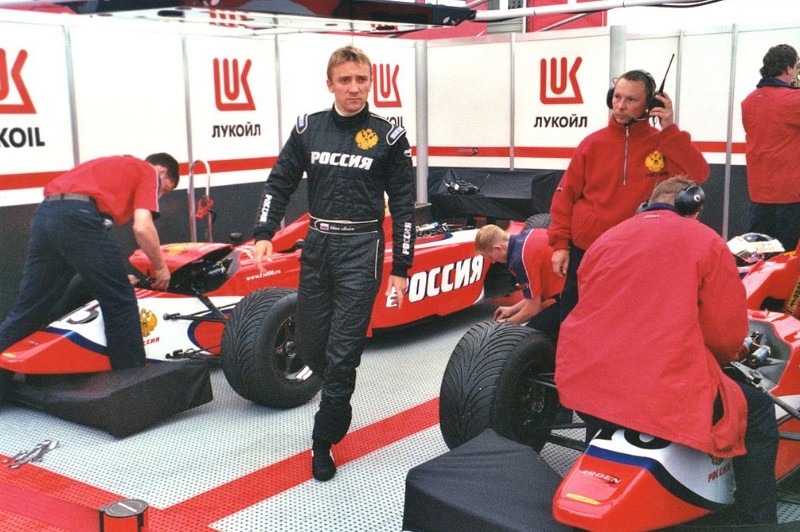
Arden in 2001 Photo: Hellahulla
He has nothing but praise for team boss, Horner. “I can remember that Christian was extremely ambitious. In 2001 he ran Viktor Maslov, who had brought a big sponsor, and Darren Manning. When I came to Arden in the autumn of 2001, he immediately said: ‘We want to win the championship. You’re the only one who can do that for us, and we’ll give everything.’ Super team, engineers, as soon as I got there the ambition – ‘with you we will win the championship’.
“I didn’t feel under any pressure, rather I was really looking forward to it and it was great.”
Horner was a really “super, wonderful, very fair,” boss, says Enge. “He really made it clear that he believed in me. That really builds your self-confidence and I think he is still the same, how he fights for his team and his drivers, and against the competition. If I watch Drive to Survive he speaks just as he used to speak then.”
Enge has motor racing in his genes – father Bretislav was a top touring car driver in the late 1970s and early ’80s, competing in the European Touring Car Championship in a Skoda 130Rs and then various BMWs across Europe, despite the obstacles imposed by the communist regime in Czechoslovakia. Together with co-driver Zdenek Vojtech, Enge senior finished third in the 1982 Tourist Trophy at Silverstone.
“Dad raced in the West which meant that in order to get permission from the communists to travel abroad, he had to leave his family in Czechoslovakia to ensure that he would come back to his family, that he wouldn’t emigrate.”
Keen sportsman Enge played ice hockey and did ski jumping, typical sporting activities for a boy growing up in the mountains around his home town, Liberec. “I have to say that I wasn’t close to the motor racing, even though I had a racing father at home, surrounded by lots of photos even if I watched some races on television.”
Then around the age of 12 or 13 he finally got the bug. “Dad started to race back in Czechoslovakia, and started to prepare his racing cars in our garage at home.
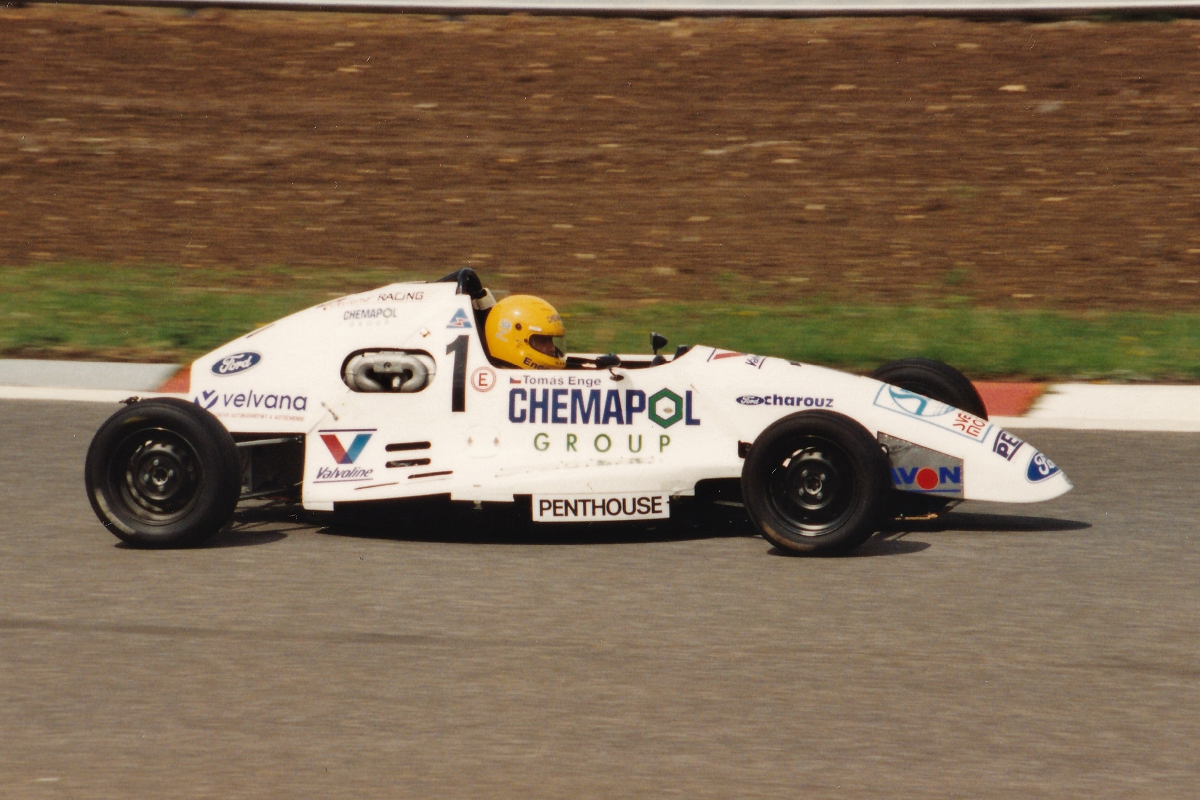 “Whenever there was a race in Brno, sometimes we had the chance to go there to watch. As small boys, we didn’t know these big cars and famous drivers. Everything was so far away from us, these weren’t go-karts that we could jump into. At that time it was really popular for the teams to have stickers to give to the fans, so we just ran up and down the paddock trying to collect them, shouting: ‘stickers please’.
“Whenever there was a race in Brno, sometimes we had the chance to go there to watch. As small boys, we didn’t know these big cars and famous drivers. Everything was so far away from us, these weren’t go-karts that we could jump into. At that time it was really popular for the teams to have stickers to give to the fans, so we just ran up and down the paddock trying to collect them, shouting: ‘stickers please’.
“At that moment I really wanted to race myself. In the evenings, when my parents were watching TV, I used to take dad’s overalls, helmet, shoes, gloves and go to the garage, get changed – I was still small so they were quite big – and got into the car. It was a Skoda of some sort and I would sit in the car and make the noise of the engine and pretend to be racing it.”
He didn’t start racing karts, with a 50cc motor, until the age of 14, but when the rules changed to allow 16-year-olds to race cars, Enge quickly got his racing licence and entered the Czechoslovakian Ford Fiesta Cup. When the opportunity came to try a single-seater, Enge was immediately hooked.
“Once I’d experienced the unbelievable feeling of driving a single-seater compared with the Fiesta or a touring car, I just really wanted to drive in single-seaters.”
For 1995, Enge stepped up to Formula Ford 1800 in the German championship, competing against the likes of Nick Heidfeld and Pierre Kaffer. “I got the hang of it very quickly and I was faster than Heidfeld. I won the first three races in Zolder, Brno and Most and then I started to crash a lot. I just wanted too much and didn’t know how to calm down and take that step back below the limit as I just had to drive always on or over the limit.”
After finishing third in that first season in FFord, he went on to take the title the following year, as well as coming 13th in the FFord Festival.
The step up to Formula 3 in Germany yielded little in the way of results, as Enge struggled to come to terms with the driving style required.
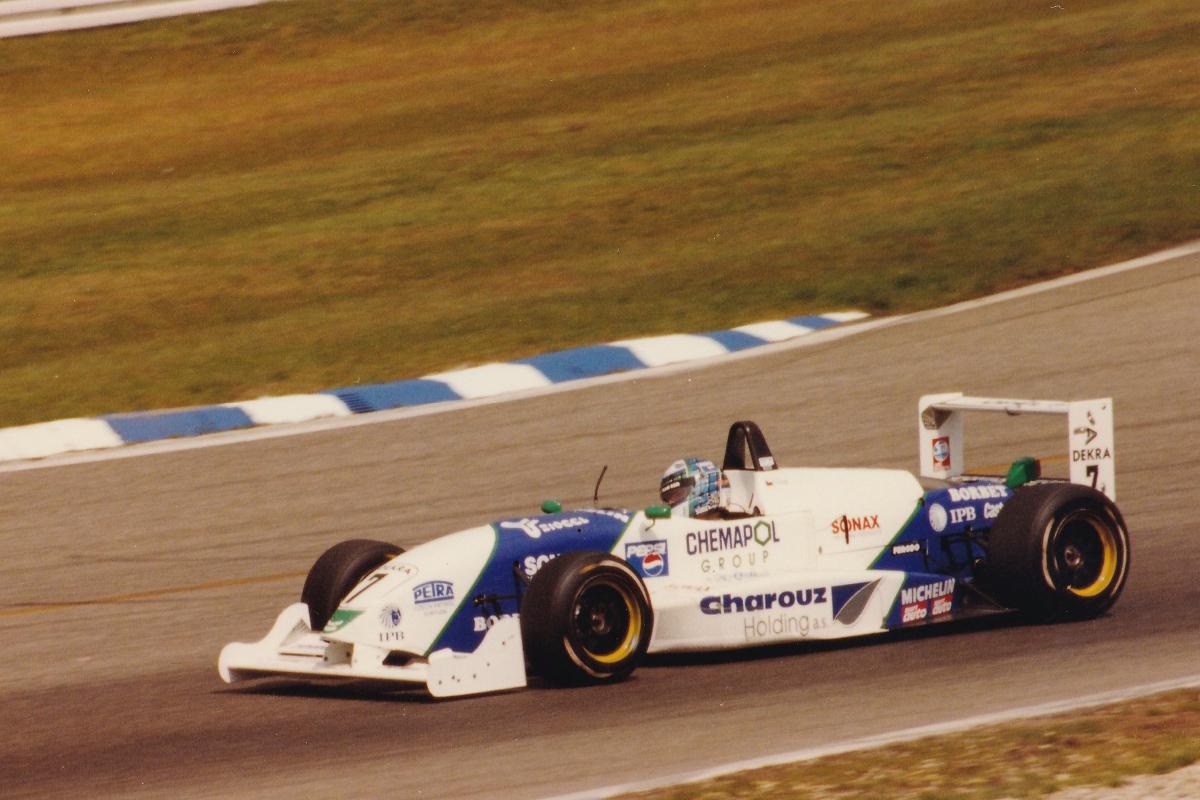
Enge in 1997
“It just didn’t suit my aggressive style. The car didn’t have much power but had lots of downforce to give it huge grip.” And so the smooth entry and exit required to get the most out of it was not something that a rather wild Enge could handle. “I always really overdrove the corners and then didn’t have the exit speed,” he admits.
Despite switching to the works Opel team of Bertram Schafer Racing for his sophomore season, results didn’t improve, not helped by dropping the dominant Dallara in favour of a Martini chassis. Then the chance came to test a F3000 car at Varano.
“I really enjoyed it – wide car, big tyres, big performance and drifting,” Enge says of the test. He made his F3000 debut in July 1998 at Hockenheim with the Auto Sport Racing outfit from Italy, qualified fifth at Spa and scored in the Nurburgring finale, before joining a new team, the WRT Fina squad of Gabriele Rafanelli, who had run BMW Bigazzi in touring cars, for 1999.
The season was a major disappointment. Enge failed to qualify for the first two rounds, but he stuck at it, “and even got a podium in the wet at Magny-Cours but otherwise we didn’t have any results”.
For 2000, Enge again followed the path trodden by Heidfeld, moving to the mySAP.com team, effectively a McLaren junior team, with which Heidfeld had clinched the 1999 title with. “For some reason, it wasn’t a success,” remembers Enge.
But at Hockenheim, two years after his F3000 debut, Enge finally tasted victory. Starting from pole on a wet track, Enge pulled away from team-mate Tomas Scheckter. However, as the rain eased it became more difficult.
“I had the feeling that I’d overheated the tyres and that Scheckter was catching me up. In my mind, instinctively I calculated that I wouldn’t be able to hold on and that Scheckter would overtake me.”
He radioed the pits to prepare to change to slicks. However, due to a radio problem, though they heard him, he could not hear their response telling him to stay out. After a lengthy stop, he rejoined in the middle of the top 10 with only a few laps remaining and was shocked to discover that everybody else had stayed out on wet tyres.
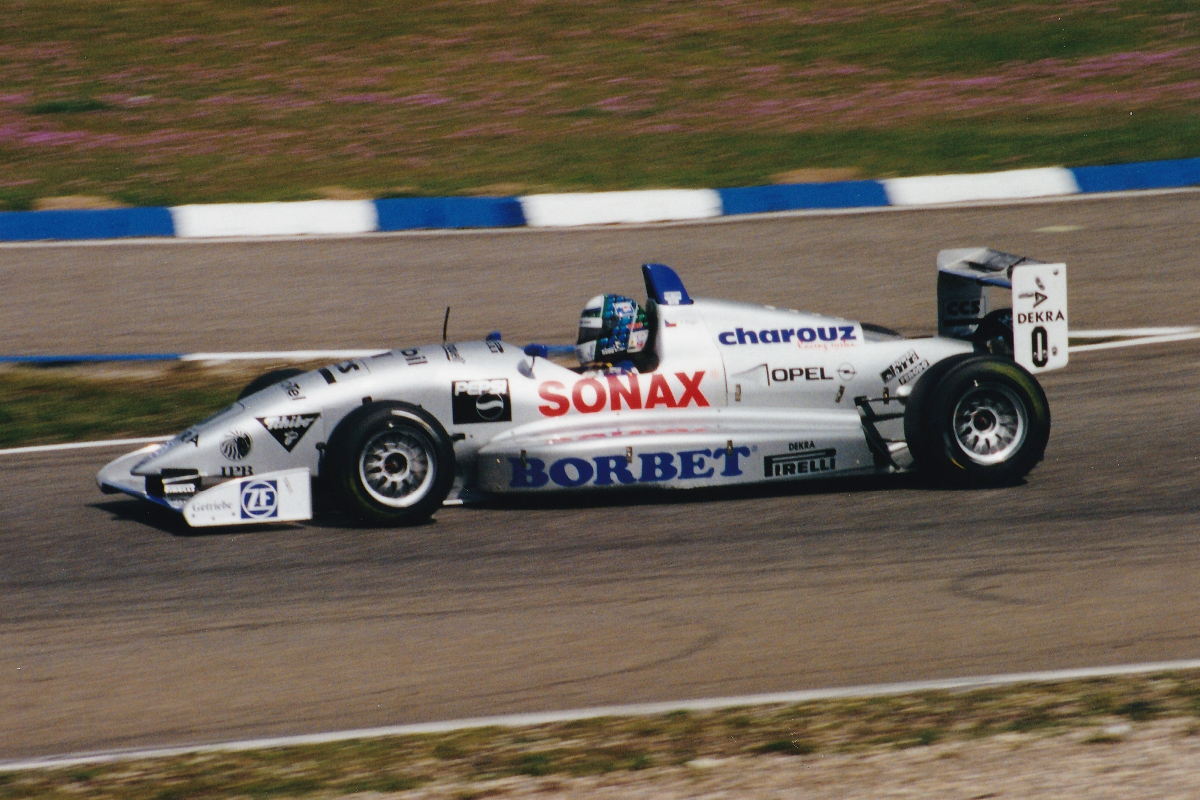
Enge in 1998
As he fought to get heat into the tyres, Enge feared that he’d made the wrong decision, but after a lap-and-a-half the tyres were working and he began to hunt down those in front.
“I began to go past one after the other – bang, bang, bang. And then onto the last lap and I was taking it carefully. It was such a bizarre win because nobody knew that it had been my decision to change tyres, that the team hadn’t wanted me to go into the pits and I hadn’t heard them.”
Enge again switched teams ahead of the 2001 season, joining Justin Wilson at Nordic Racing. He took two wins at Barcelona and the Nurburgring, but with Wilson out of reach in the championship missed the final round at Monza as F1 was beckoning.
Following Luciano Burti’s frightening crash in the Belgian Grand Prix, his Prost team was looking for potential replacements and Enge was invited to test at Magny-Cours.
“The team wanted me to test and to do the mandatory 300km in order to get a superlicence so that I could step in if required,” he recalls. He learned that he would be driving on the Monday before Monza – 10 September 2001. The next day, of course, the world changed.
“I was in Monaco at the time and somebody called me from the Czech Republic and asked ‘Have you seen what’s happened? Switch on the TV.’” In those pre-internet days, he, like the rest of the world, sat glued to the television.
“Nobody really knew what had happened but there was lots of speculation that the grand prix would be cancelled, that flights would be cancelled, that the world would freeze in an instant.”
After much debate, the race went ahead, and Enge got to make his F1 debut, “the first Czech, the first Eastern European, the first ‘Communist child’ to race in F1”.

Enge in 2000
His weekend was plagued by mechanical issues from the start of practice. “Each training session there was some technical problem – engine, brakes, electronics – so I went into qualifying having not done many laps.
“On the first lap at the first chicane the engine blew up. I stopped, ran back to the pits for the spare car, which was set up for my team-mate, Heinz-Harald Frentzen. The mechanics quickly changed the seat, the pedals, the set up for me.”
On his first flying lap in the T-car “the gearbox goes from seventh to fifth on the straight. Some sort of electronic problem. Gearbox blown up, engine blown up, kaputt.”
After another technical problem in the warm-up, “we started the race and I thought ‘if I do more than 10 laps without a problem it will be a miracle’. But I did 53 laps and I finished 12th, my best result.”
Enge saw out the season with Prost, finishing 13th at Indianapolis Motor Speedway and retiring at Suzuka, although with no testing and no simulators in those days, he’d had no chance to learn the circuits.
It was clear that the writing was on the wall for Prost’s F1 team, and in November 2001 it went into liquidation. “Money was short. Prost was unable to invest in new materials, such as engines or gearboxes. They ran the parts to the end of their lives, the overhauls didn’t happen as they should, that’s why we had so many technical problems.”
Alain Prost skipped the last two races to work on a rescue package but to no avail. Enge had been sure that someone would step in and that he would continue into 2002. When it became clear that wasn’t going to happen “the seats were pretty much occupied”.
Only Minardi had seats available but “we didn’t want to go there as Minardi had been the slowest car, which turned out to be a mistake” as the team started the next F1 season with a remarkable fifth place in Melbourne with debutant Mark Webber.

Enge in 2004
With no options to move up, Enge was forced to drop back to F3000 for 2002, which is where our story started.
Enge agrees that the doping test may well have cost him further drives. “Maybe not only F1, but also Indycar. But it is difficult to say. Even before the doping there were not the sponsorship funds to go further. I don’t want to speculate.”
After a final crack at F3000 in 2004, Enge decided to try his luck in the USA. For the next year he did secure a drive with Panther Racing in the Indy Racing League, at that time predominantly an ovals-based championship.
It was “a completely different world,” he says. “The speed, the massive adrenaline but the driving technique and thinking were completely different. Each oval is different – gradients, straight lengths, type of surfaces, bumpiness, even the ways the wind blew.”
In the fourth round at Motegi he had a rib-breaking qualifying crash, which complicated his Indianapolis 500 debut.
“I couldn’t start the race which was at the end of April and ribs usually need three weeks to heal.” With the Indy 500 less than a month away, and the rookie test and qualifying in between, he had a race to get fit.
He qualified 10th and ran sensibly through the first 400 miles. As the race went green on lap 160, Enge was running second behind Danica Patrick, the first woman ever to lead the Indianapolis 500.
Enge takes up the story: “Green flag. Patrick in front of me. Full throttle. She starts to spin. I went down. She crashed into me. Crashed into [Panther team-mate, Tomas] Scheckter. We were both out of the race, me and Scheckter.”
Enge was ready to stay in the US. “I took it that 2005 was for me a learning year and then 2006 and 2007 I would start to reap the rewards of the experience. I was mentally prepared to stay in America. I liked it there, the racing was great, I had good conditions, I felt at ease. The American race fans were amazing.”

Enge in A1GP
But then at the end of the year Chevrolet, who had been supplying engines exclusively to Panther, stopped its Indycar programme. A one-off drive with Cheever Racing in 2006 felt too much like stepping unprepared into the Prost again and so Enge called quits on his American adventure.
Asked to name a career highlight, he returns to his brief time in America. “I really loved Indycar because of the high adrenaline, high speed, side-by-side racing, cars in front, beside, behind and underneath you. You know that each small correction or mistake can end up in a huge and painful accident so therefore the adrenaline was massive.
“I had quite few technical issues throughout the whole season and a few accidents as well. While some of the accidents were my fault, some weren’t but that’s racing. Unfortunately, I could not prove myself.”
Occasional races for the Czech A1GP squad, run by former mentor Antonin Charouz, yielded one victory at Shanghai, but by this time Enge had moved to sportscars, the area where he achieved probably his most prolonged run of success.
Although his best finish in the Le Mans 24 Hours came in 2009 with the Lola Aston Martin LMP1 car, the car didn’t suit his ballsy style of driving, which was more attuned to the brutish GT1 machinery
“I never really got on with the prototype, because the driver sat relatively close to the front axle and the rear wheels were a long way back, plus the rear was very heavy with the 12-cylinder Aston Martin engine. When it got into a slide it wasn’t easy to correct it.”
His speed in a GT1 car at Le Mans was never in doubt, with six class pole positions, five of them in succession, for Ferrari and Aston Martin, but only one class victory in 2003.
In such a long and varied career, does he have any regrets? “Mistakes, of course,” he replies. “If mistakes hadn’t happened things would have been different. The question is, in which direction?”

Enge today
He is trying to pass on the benefit of this experience to a new generation of drivers. He is coaching two young Czech drivers in German GT4 racing and worked for a period in 2021 with the country’s rising single-seater star Roman Stanek.
Enge says he races now “more or less for fun”, continuin to drive in national rallies with his sister Lucie as co-driver.
He is clearly at ease with his life and his career, and its highs and lows. His young family is naturally important, but he doesn’t have any plan to be a racing dad pushing his five-year-old son into karting.
“I’m trying to keep him away, but I know I won’t be able to keep him away so long,” he says. “Once the kid starts to have fun in racing, the father has to stop having fun, to fully focus on the kid.
“I don’t want to be the parent who is getting crazy. Maybe I won’t get crazy. This is something I am learning as well, about my own kids.”
Possibly Enge was simply born 20 or 30 years too late. High-downforce cars, requiring finesse and precision were probably never his thing. Racing was always fun, the more power the better. He talks of adrenalin frequently. Versatile in the mould of a Vic Elford or his contemporary, and, briefly his team-mate, Stephane Sarrazin, he drove single-seaters on both sides of the Atlantic, prototypes, GTs, touring cars and rally cars.
Indeed, he came close to rallying a Prodrive-entered Subaru in selected rounds of the World Rally Championship.
Open and likeable, he appears at ease with his own failings and mistakes. His aggressive style led to incidents, but equally often he was the victim of others’ errors. And bad luck cost him dearly on and off-track.
He may be a former champion but a champion he surely was.